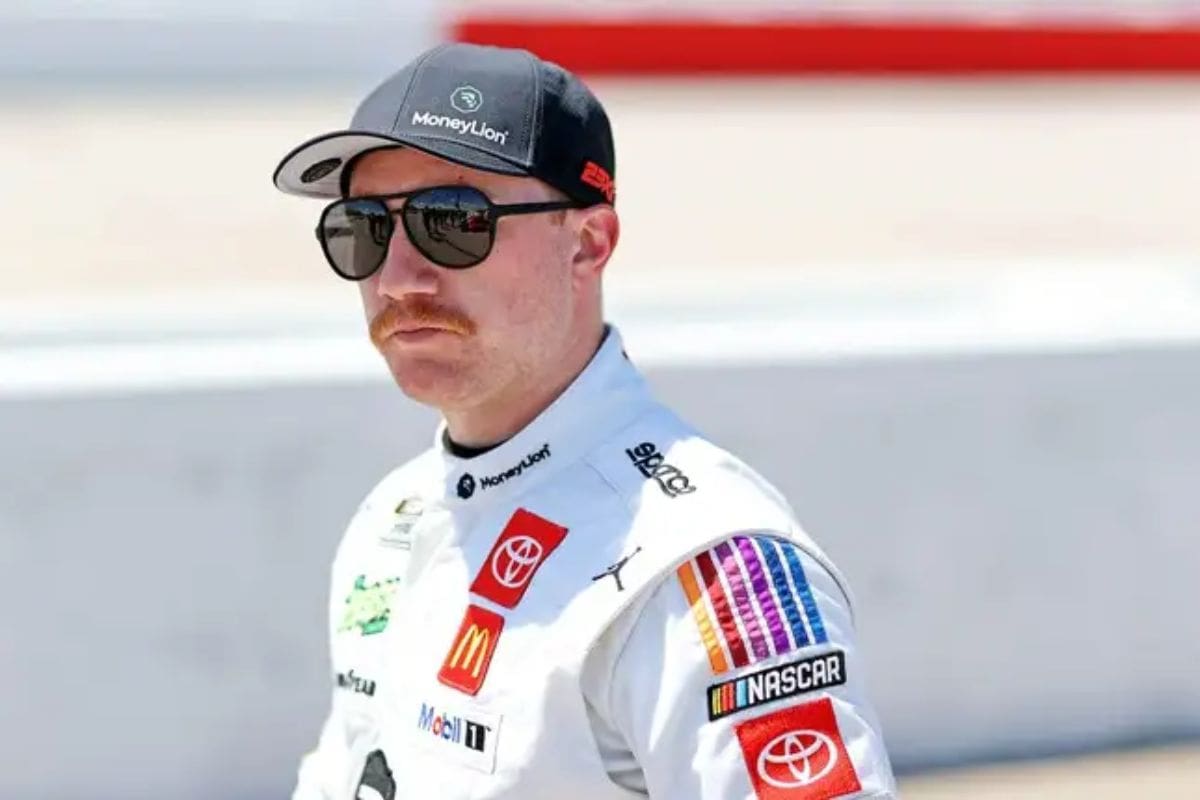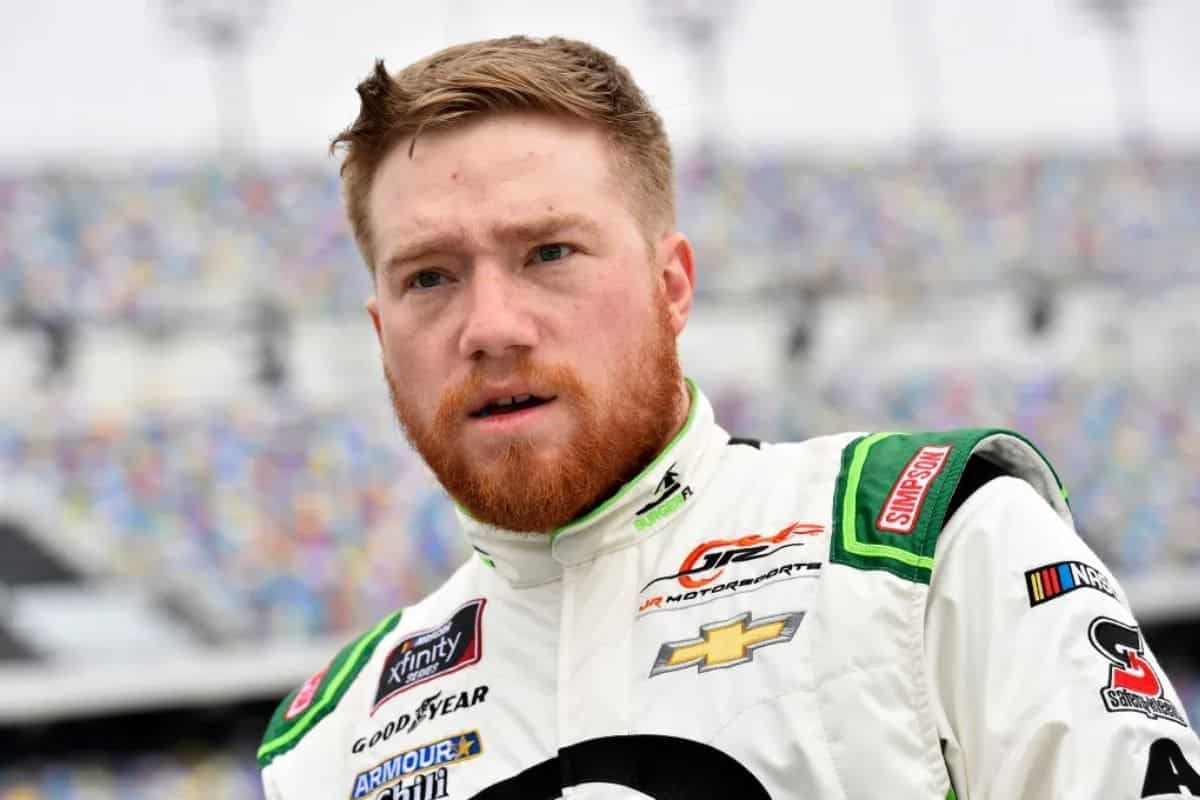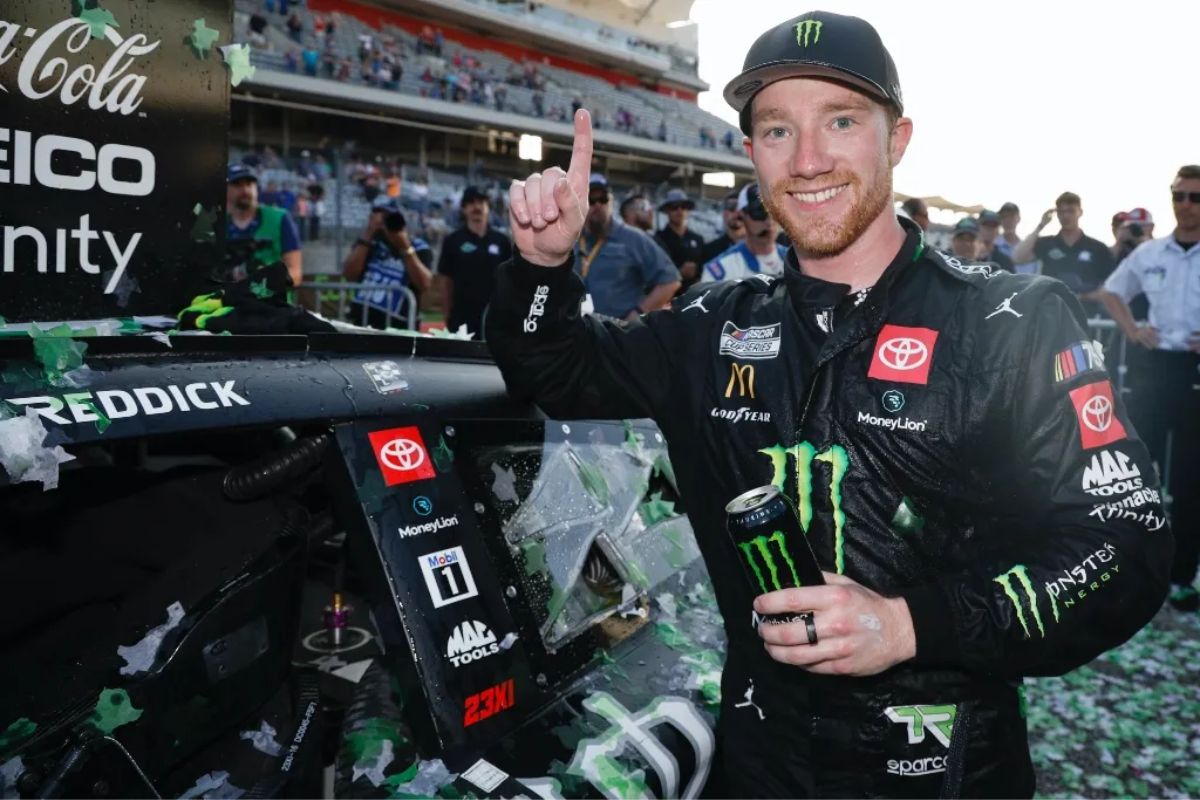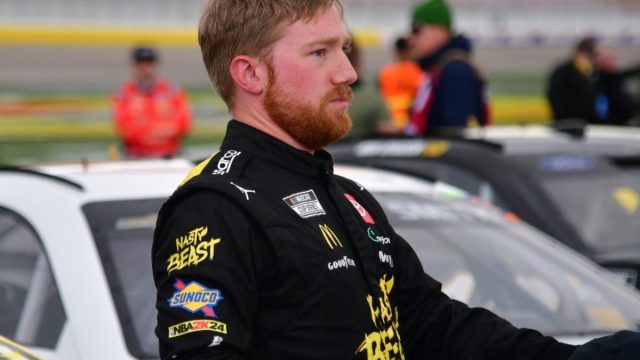Tyler Reddick’s Take on All-Star Experiment: Tyler Reddick‘s critique of the new tire introduced for the All-Star Race at North Wilkesboro Speedway brings to light a fundamental tension within NASCAR: the balance between innovation and tradition. As Goodyear and NASCAR seek to enrich the racing experience, Reddick’s concerns about maintaining the sport’s authenticity raise significant questions about the future of competition. His views are particularly poignant as they challenge stakeholders to ponder whether technological advancements might inadvertently erode the essence of racing.
Key Takeaways
- Tyler Reddick remains unconvinced about the alternative tire, emphasizing racing purity.
- Reddick views the new tire as potentially detrimental to the traditional racing experience.
- He prefers maintaining the original racing dynamics without artificial enhancements.
- Reddick’s concerns reflect a desire to preserve the sport’s authenticity.
- There’s a debate within the racing community on the impact of such modifications.
Overview and Background
The All-Star race at North Wilkesboro Speedway, celebrating its 40th anniversary and 36th North Carolina event, has a rich history that underscores its significance in the world of motorsports. The race, known for its high stakes and thrilling dynamics, has become an iconic fixture in the NASCAR calendar. Its return to North Wilkesboro Speedway last year marked a pivotal moment, as the track had been absent from the schedule since 1996.
North Wilkesboro Speedway, with its unique 0.625-mile oval configuration, presents a distinctive challenge for drivers. The track’s tight turns and demanding layout require a blend of skill, strategy, and resilience, making it a true test of a driver’s capabilities. Historically, the race has been a platform where legends are made, and unexpected victors emerge, contributing to its storied past.
The All-Star race is more than just a competition; it is a celebration of racing culture, bringing together fans, drivers, and teams in a shared passion for speed and performance. This event offers a rare opportunity to witness the sport’s elite push the limits in a non-points race, adding an element of unpredictability and excitement. The race format, often featuring unique rules and substantial prize money, further amplifies the stakes, ensuring that every lap is charged with intensity.

New Tire Introduction and Drivers’ Responses
Introducing a new dimension to the All-Star race, Goodyear’s latest tire innovation has sparked a spectrum of responses from drivers, reflecting the multifaceted challenges of North Wilkesboro Speedway. The introduction of bespoke tires specifically engineered for this historic track’s unique demands demonstrates Goodyear’s commitment to optimizing performance and safety. These new tires aim to address the nuanced wear patterns and surface intricacies of North Wilkesboro, providing a more tailored racing experience.
Furthermore, Goodyear’s provision of wet-weather tires underscores their proactive approach to the often-unpredictable North Carolina weather. This innovation is a significant stride towards ensuring that races can proceed under less-than-ideal conditions, potentially transforming the way drivers and teams strategize for inclement weather. The adaptability that these wet-weather tires afford could mitigate the disruptions traditionally caused by rain, maintaining the competitive integrity of the event.
However, the introduction of an alternative tire has been particularly polarizing among drivers. While some, like Denny Hamlin, see the potential for increased strategic depth and competitive variability, others, including his 23XI Racing teammate Tyler Reddick, remain unconvinced. This divergence in opinions highlights the subjective nature of such innovations in racing. Hamlin’s intrigue points to the possibility of leveraging the alternative tire for tactical advantages, while Reddick’s skepticism suggests concerns about consistency and fairness.
Denny Hamlin’s Impression and Tyler Reddick’s Opinion
Contrary to his teammate Tyler Reddick’s skepticism, Denny Hamlin’s impression of the new ‘Option’ tire is positive, suggesting potential for increased strategic complexity in races. Hamlin, a seasoned driver with a nuanced understanding of race dynamics, views the ‘Option’ tire as a tool that could invigorate the competitive landscape. He believes that the added layer of decision-making could compel teams to innovate on pit strategies and tire management, thereby enriching the entire race experience for both drivers and fans.
“They nailed it with this one. It’s just a great tire. Great lap time variation between the two tires and also just the ability to pass with it because there’s a difference in speed between the cars. So, as you’re seeing now guys are searching for new pavement to try to get a grip because they don’t want to be in the rubber because it is kind of slick. Right now this is like back to the old short track game.” – denny
.@dennyhamlin is one happy driver. pic.twitter.com/V8v6pgDxya
— NASCAR (@NASCAR) May 17, 2024
Hamlin’s enthusiasm stems from his confidence that the ‘Option’ tire introduces a meaningful variable that could disrupt predictable race patterns. This tire, designed to offer different performance characteristics, encourages teams to weigh the benefits of short-term speed against long-term durability.
In contrast, Tyler Reddick, driving for Hamlin’s 23XI team, articulates a more cautious stance. Reddick argues that the complexity added by the ‘Option’ tire could detract from the essence of racing. His perspective is rooted in the belief that racing purity is best maintained when the focus remains on driver skill and car performance, rather than on variable tire strategies.
“It took longer than I thought for it to really have the fall off, to really counterbalance it, but maybe with more laps on the track. is more rubber just. gets into the track pedal change, but… It didn’t fall off as much or as the red tire did not fall off like I expected to. It still fell off lot more, but not a crazy amount.“
“More grip is a good thing, but that just means we’re closer to wide open, that hurts racing to at the same time. Fall off look good and it seems like has more of it. And I don’t know if anyone had any courting or anything like that, but everything seemed good on our camp tire-wise.” – Reddick
Tyler Reddick on the tire wear of the softer tire and the amount of grip. pic.twitter.com/o5irFgqVUm
— Bob Pockrass (@bobpockrass) May 17, 2024
The divergence in viewpoints between Hamlin and Reddick underscores a broader debate within the racing community. While some, like Hamlin, champion the ‘Option’ tire for its potential to revitalize race strategy, others, like Reddick, caution against overcomplicating the sport.

Goodyear’s Expectations and Tire Performance
Goodyear‘s strategic innovation with the ‘Option’ tire hinges on its ability to improve lap times by four to five-tenths, as noted by racing chief Greg Stucker, while simultaneously demanding meticulous tire management due to its accelerated wear rate. This dual-edged sword of enhanced grip and speed, paired with rapid degradation, places a premium on the strategic acumen of racing teams.
Greg Stucker’s insights underscore the balance teams must strike between exploiting the Option tire’s speed advantage and managing its propensity for increased wear. This complexity is further compounded by the wet weather compound adjustments necessary for best performance on the five-eighths-mile track. The additional grip provided by the Option tire can alter the dynamics of a race, demanding that drivers and crews adapt quickly to the evolving conditions.
“Just the speed of these cars I think that’s going to be the big story. Also, just the grip level, and the way you’re gonna have to probably push and shove a little bit to make those moves. Last year, you saw a lot of slipping and sliding. There’s gonna be less of that. So, it’s probably gonna take more aggression this year than you saw here a year ago.“ – Greg
Engaging in this tire management challenge, teams must carefully consider their pit strategies and lap timing. The accelerated wear rate of the Option tire necessitates a nuanced approach to tire changes, ensuring that the maximum performance window is utilized without compromising race integrity.
Track Improvements
A significant transformation at North Wilkesboro Speedway is the newly resurfaced track, replacing the notoriously rough surface that drivers lamented last year. For the initial time since 1981, the venerable track has received a fresh layer of asphalt, addressing the previously uneven and abrasive conditions that had long challenged both drivers and their machines. This modern overhaul not only promises a smoother and faster racing experience but also raises the stakes, with a cool million dollars on the line for the winner.
The resurfacing project at North Wilkesboro represents a substantial investment in the future of the track, signaling a commitment to providing a top-tier racing environment. The previous surface, characterized by its bumps and cracks, often led to unpredictable handling and excessive tire wear, detracting from the precision and competitiveness that are hallmarks of elite racing. With this new surface, drivers can now expect more consistent grip and tire performance, thereby enhancing both the strategy and spectacle of the race.

News in Brief: Tyler Reddick’s Take on All-Star Experiment
The introduction of a new tire for the All-Star Race at North Wilkesboro Speedway has sparked a spectrum of reactions. Tyler Reddick expressed skepticism concerning the potential erosion of NASCAR’s traditional essence.
This scenario underlines the ongoing tension between innovation and the preservation of core racing values. The outcome of this tire experiment will be pivotal in determining the future trajectory of NASCAR. It aims to balance modern advancements with the sport’s historical integrity.
Our Reader’s Queries
Q: What is the NASCAR All-Star open?
A:The All-Star Open is a 100-lap race with a break at Lap 50. Twenty drivers not yet qualified for the All-Star Race will compete for two transfer spots. The starting lineup for the NASCAR All-Star Race is set by two qualifying heat races on Saturday night.
Also Read: Kevin Harvick Supports Tyler Reddick’s Move, Calls for Repeat
